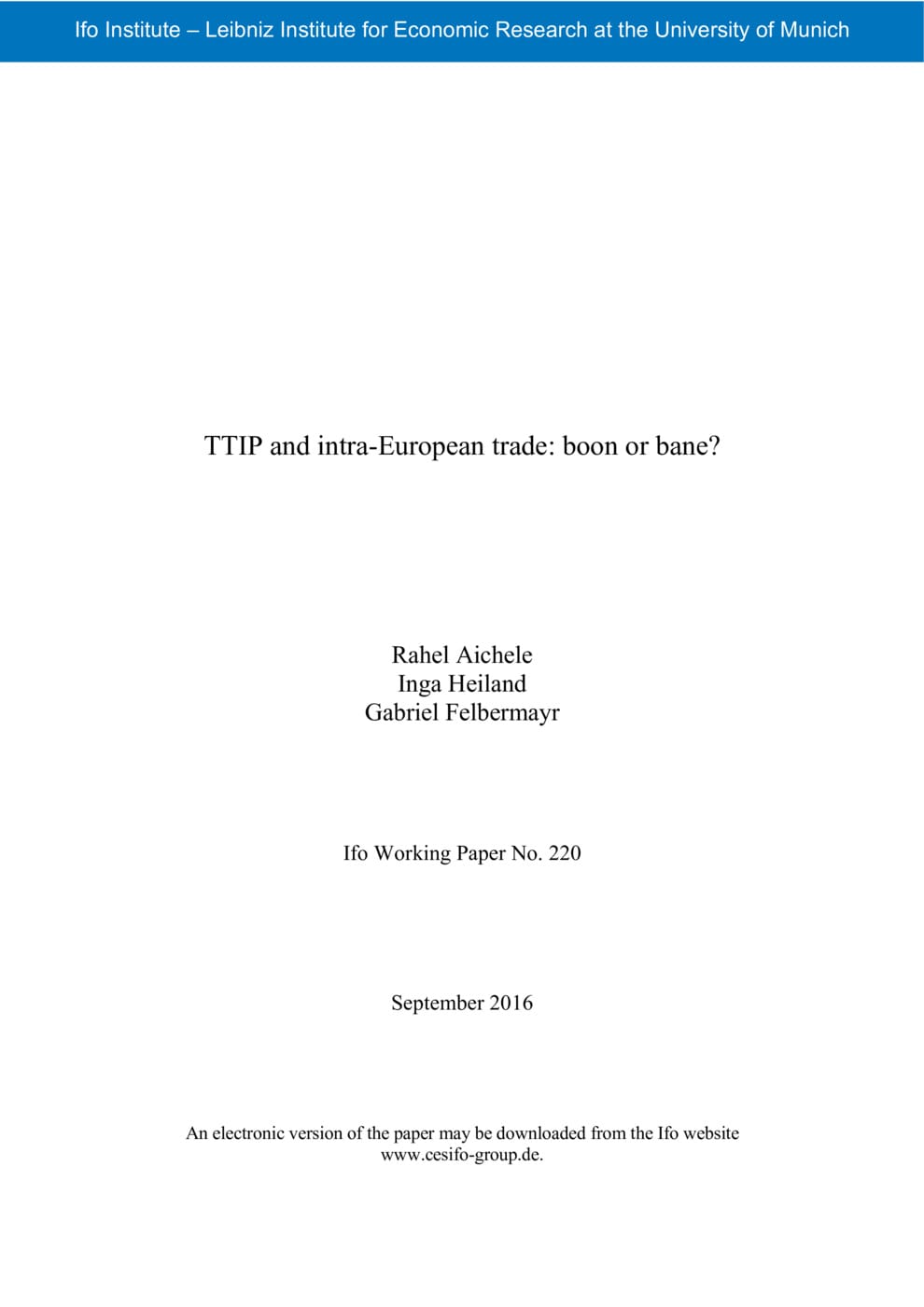TTIP and intra-European trade: boon or bane?
Ifo Institute, Munich, 2016
Ifo Working Paper No. 220

The European Union is the world’s largest and deepest free trade zone. Amongst its members, it has abolished tariffs and lowered non-tariff barriers. This has led to trade creation within Europe and to trade diversion between EU countries and outsiders. The Transatlantic Trade and Investment Partnership TTIP (or other trade agreements with third countries) will undo some of these effects by means of preference erosion, so that cross-country trade links within Europe may lose relative prominence at the expense of additional trade with the US. However, the presence of a rich fabric of regional value chains in Europe and substantial income effects could counter this development. In this paper, we provide insights based on a New Quantitative Trade Model. We show that TTIP could indeed lower trade integration in Europe since predicted income effects turn out not to be large enough to overcome the effects of preference erosion. Moreover, trade diversion effects in value added terms tend to be even more pronounced than in gross (official) trade flows. However, there is substantial heterogeneity across sectors and countries. To avoid the political costs associated with weaker intra-EU ties, Europe should deepen the single market alongside the formation of large trade agreements with outsiders.